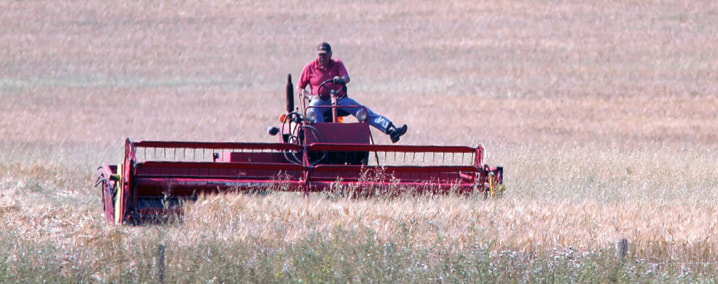With swathers and combines rolling into Central Alberta fields, area producers are just a few weeks away from getting a pretty good crop into the bin.
Alberta Agriculture and Rural Development reported on Friday that two per cent of regional fields had been combined and a further nine per cent swathed, as of last Tuesday.
These figures were inflated by harvest activity related to winter wheat (32 per cent harvested and 16 per cent swathed), field peas (24 per cent combined) and canola (25 per cent swathed).
Quality remains high, with good or excellent ratings given to 96 per cent of Central Alberta’s winter wheat, 94 per cent of its field peas and oats, 91 per cent of its canola, 90 per cent of its spring wheat, 88 per cent of its barley and 87 per cent of its durum.
The report projected yields at 10 per cent above historic averages.
“The numbers are up where you want them to be,” said Mark Cutts, a crop specialist with Alberta Agriculture’s Ag Info Centre in Stettler, on Monday.
“The ratings overall are still good.”
Cutts said it was too soon for his office to have received much feedback from farmers, but information related to yields and quality should start coming in soon.
“Probably two weeks from now we’ll have a pretty good feel how things are going.
“Hopefully, if the weather continues to hold, guys can just keep moving through it.”
It does appear that crops are ripening in a timely fashion, unlike the previous few years when late harvests made frost damage more likely.
“Looking at where we are in terms of crops getting close or very close to maturity in most areas, if the weather can hold here for another couple weeks, I would think the risk of frost damage is going to be certainly minimized.”
An exception could be fields hit by hailstorms that are now behind schedule.
A week and a half ago, the Canadian Crop Hail Association said that nearly 4,000 hail-related claims had been made by Alberta producers — making 2012 the second busiest year of the past 10 for adjusters.
Much of that damage related to a July 31 storm in the Olds-Three Hills area, and to subsequent hail from Lacombe to Innisfail and west to Caroline.
Cutts said losses to pests have been relatively low.
There has been some spraying for lygus bugs in west Central Alberta, and for bertha armyworms east and northeast of Edmonton.
“I guess we’ll see with canola, for example, when producers go in to swath if they’ve had any significant disease issues that might have impacted yield.”
If yields and quality are as good as many expect, farmers should be rewarded at market.
“It seems like prices are holding, and that’s a good thing going into harvest season,” said Cutts.
He pointed out that there’s an added benefit to getting crops into storage ahead of cold weather.
“If harvest can be done in a timely manner it does allow some field operations in the fall that can save you time next spring,” said Cutts, listing fertilizer application and weed control as examples.
hrichards@www.reddeeradvocate.com
